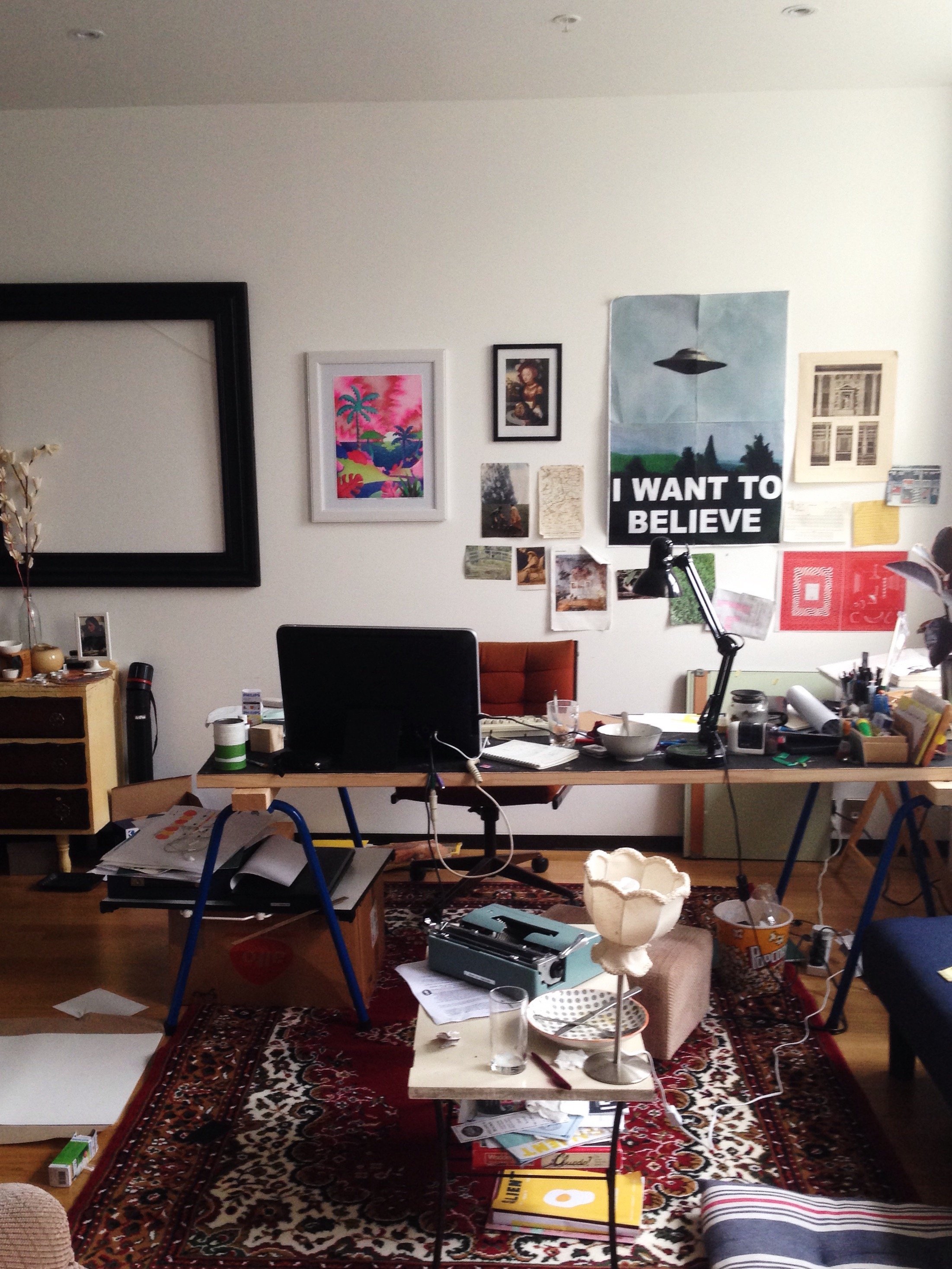Clearing the cobwebs: How decluttering improves seniors’ lives
by Katie Wright | Jun 08, 2021 | home health care, healthy living seniors, decluttering | 0 Comments

If you’re an older adult, have you thought about your belongings as part of your legacy?
I have, and I’m decluttering my home. It’s time. I’m not a hoarder, but finding a clear work surface isn’t easy. I’ve been reading some compelling material about the value of simplifying, downsizing, and decluttering.
The longer you live in your home, the more you accumulate. For many seniors, home is a museum of memories. Meaningful things gathered over the years.
There are all kinds of stuff – photographs, clothing, and holiday decorations. Clothing and shoes have a way of multiplying. Basements and garages hold furniture, extra suitcases, or books that haven’t been touched for years.
You have things you’ve gathered over your lifetime. Things you bought because you needed them or simply wanted to have them. Things that were meaningful once. And because of that, it’s difficult to part with them.
If you’re a senior like me, you even have some things handed down to you from your parents or grandparents. And if you’re a lot like me, these sentimental keepsakes are carefully stored away because there’s not a place to display them and there’s not a practical use for them.
But you can’t let go. Maybe you’ll need them, wear them, or use them again. Or maybe you’re just not ready.
All of the stuff that occupies space in your house that isn’t in use, or is hidden away, or many times forgotten? It’s clutter.
Let’s talk about how clutter can interfere with your well-being and ways you can start dealing with it.
Here’s to decluttering and to your health!
Why do you accumulate stuff in the first place?
The late comedian George Carlin said, “A house is just a place for your stuff. If you didn’t have so $%*#@ much stuff you wouldn’t need a house. Your house is just a pile of stuff with a cover on it.”
Maybe someone dear gave it to you so there’s sentimental value in it. Like the ivory Belgian lace tablecloth for an 8-foot table that belonged to my grandmother. I’d probably faint if anyone spilled food on it, and besides, I don’t have an 8-foot table.
Sometimes you keep things because you believe you’ll need them one day. Like the thread in all the colors of the rainbow in my sewing box, even though my sewing days are pretty much behind me.
You’ve likely experienced being drawn to a beautiful object and buying it for its aesthetic value. I have many of my mom’s “tchotchkes” – trinkets that were never actually useful but existed because they were souvenirs of a special occasion or just pleasing to look at. I don’t have a place to display them, but they are undeniably lovely.
Kitchens are perfect locations for clutter to creep in – from duplicate cooking utensils to long-forgotten dried beans in the pantry to condiments in the refrigerator that have existed way past their prime. I recently found some friendship soup mix (colorful, layered, dried soup ingredients) given to me by my boss’s wife 12 years ago. I’d simply been overlooking it for years.
Getting rid of your belongings feels like banishing your past. You’re afraid to let go. You form attachments to things the same way you keep memories alive. But there’s a tipping point, and that’s when belongings become clutter that interferes with your health.
Do you have too much stuff? Here’s how you know
There’s more than one junk drawer in your house. A junk drawer is handy as a quick place to toss miscellaneous things like paper clips, coupons, pens, and spare keys. Do you have more than one drawer like this? Then you have too much junk.
It’s hard to find something you need. We all misplace things from time to time, but if you struggle to locate an item you know you have somewhere, you probably have too much stuff piling up.
You worry that your house looks messy. Who hasn’t experienced a frantic last-minute cleanup before a guest arrives? If the overall state of your place is continual chaos, it’s time to clean up and get rid of clutter.
Your closets are too small for your possessions. Things like shoes, clothing, and linens go into your closets, along with miscellaneous things that aren’t used regularly. Are your closets full and overflowing? It’s time to reduce.
Thinking about how much stuff you have feels depressing or discouraging. This is significant and it’s a clear signal to get busy.
It’s good to get rid of things you no longer use, but how is this good for your health?
Clutter weighs a lot. Not only does it have volume, it also has emotional heft. Like baggage – bulky and emotionally heavy.
That emotional weight can actually interfere with your concentration and ability to focus. It can make you feel less in control, which is stressful. That’s been my experience. But my recent decluttering has taken a big weight off my shoulders.
There are lots of reasons for people of all ages to declutter, but let’s focus on a few more of those that are most relevant to the well-being of older adults.
It’s a matter of safety. As you age, having a clutter-free space can mean fewer falls. A clearer space paves the way for easier navigation and access, especially if you rely on a wheelchair, walker, or cane.
It’s better for your health. Keeping clutter dust-free is difficult. You’ll reduce the allergens in your home if you have less surface area to clean and things are more visible. This applies to shelves of knickknacks, stacks of books or magazines, and excess furniture. There’s evidence that clutter can cause the brain to release more cortisol and increase stress levels.
It’s better for your memory. Visually, clutter is a distraction, causes mental overload, and can impact your memory. It’s important to reduce the chaos and confusion that clutter creates, particularly if someone in the house has memory impairment.
It’s a labor of love for your children. Margaretta Magnusson, author of The Gentle Art of Swedish Death Cleaning says, “Do not imagine that anyone will wish – or be able – to schedule time off to take care of what you didn’t bother to take care of yourself. No matter how much they love you, don’t leave this burden to them.”
Simple steps to get started decluttering
Remind yourself that decluttering is a process that can take time. After all, you didn’t accumulate all of that stuff overnight.
Here are a few thoughts on getting started. There are plenty of good decluttering resources available – books, websites, and even professional home organizing services. Just doing a little research will make you feel better.
Work in stages. Starting with easier things gives you a sense of accomplishment in short order. Pare down by removing duplicates, such as items from your kitchen, socks from your drawer, or sets of sheets from your linen closet. Be realistic about how many of each thing you really use and forget about thinking you might need extras someday.
Tackle your kitchen early on. You might be surprised at what you can let go, particularly in the way of expired foodstuff and duplicate utensils and dishes. How many pie plates do you really need? Cast a critical eye on single-use tools, like turkey basters, strawberry hullers, and salad spinners.
Get some help. This is a good time to enlist your children because they can let you know if there are things they want. A trusted friend can help by giving an objective thumbs-up or down to items you aren’t certain about. And if you have someone sorting through your belongings with you, you’re less tempted to spend a lot of time in any one area.
Buy some time while you consider things that are particularly hard to part with. There are items that defy logic when it comes to making a decision to keep or toss. Put them into a labeled box marked with a date 30 days out. When that date arrives, ask yourself what’s in the box without opening it and if you can’t remember, then you don’t need those items and it’s time to give them away.
Save photographs for last. Going through photos is hard – they’re sentimental, they prompt memories, and somehow it feels wrong to destroy photos of people in your life, even if they’re duplicates. So be gentle with this process and if you can’t bring yourself to part with your boxes of pictures, let this job go. Your children or whoever is responsible for your estate can take care of them.
Ways to feel good about letting go
Courtney Carver, author of Soulful Simplicity says holding on is actually harder than letting go. “Letting go may feel hard, but holding on is harder. You have to hold on every single day. You hold on by paying for items with your money, time, attention, and emotion. You only have to let go once.”
If you’re able to make a clean, regret-free break with your things then plan to sell them (garage sale, eBay, craigslist, Facebook Marketplace), donate them, or toss them.
But if you think someone would love to give your treasures a new home and you’re willing to take a bit more time, there are other options. If you’re like me, your first choice will be someone who really wants your things, someone you have a connection with. Somehow, this makes letting go a little easier.
How do you find them?
Start by checking with your family. There will be things they would like to have, but don’t be alarmed if they decline. This isn’t a reflection on you, it’s because they have their own taste and in fact, many millennials tend toward minimalism. If they don’t want your things, maybe they know someone who does. Someone establishing a first-time household, for example.
Join a Buy-Nothing group in your neighborhood. The Buy Nothing Project is a wonderful movement that started a few years back as an experimental local gift economy on Bainbridge Island here in the Puget Sound area.
Buy-Nothing groups use the Facebook platform for gifting. Neighborhood membership is private, so you get to know and trust others in your group and become part of a community, all the while practicing re-use and reducing dependence on single-use items. All exchanges are cashless.
I’ve been a part of my neighborhood buy-nothing group for a year, and it’s one of the best community activities around. Many of my hard-to-part-with treasures have found appreciative new homes. That feels terrific.
There are buy-nothing neighborhood groups in and around Bellevue, Redmond, and Renton. Seattle has nearly 100 groups. Find one close to your home HERE. Founders Rockefeller and Clark’s book, The Buy Nothing, Get Everything Plan, is available through the King County Library System and the Seattle Public Library.
Give to a Little Free Library. Do you have lots of books? There are dozens of these little curbside libraries in King County and probably something near your neighborhood.
At SeaCare, we want to help seniors successfully age in their own homes. We know that simplifying and decluttering is an important step toward that goal. A safe, peaceful, and comfortable home helps caregiver families focus on what’s important – loving and nurturing each other. We’re here to assist you.
If you or a loved one you know are looking for additional support during this time and are interested in scheduling a free in-home assessment, please contact SeaCare In-Home Care Services today! A SeaCare family member is standing by. 425-559-4339.



0 Comments